![]()
![]()
![]()
Use LEFT and RIGHT arrow keys to navigate between flashcards;
Use UP and DOWN arrow keys to flip the card;
H to show hint;
A reads text to speech;
27 Cards in this Set
- Front
- Back
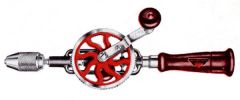
|
Hand drill: Bores holes in wood, plastic, and soft metal. It uses twist drills with 1/4" shank bits. |
|
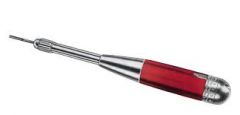
|
Push drill: operates by pushing the handle up and down in a repetitive motion. It drills holes up to 11/64" |
|
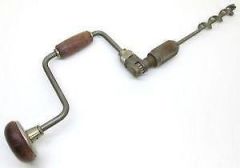
|
Brace Drill: Bores larger holes in wood by hand. Special auger bits must be used with the brace. |
|
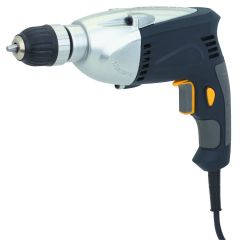
|
Electric Drill: Comes in three chuck sizes: 1/4", 3/8", 1/2". Most have a reverse drive (to back out bits or loosen screws) and variable speed. |
|

|
Cordless drill: an electric drill powered by a rechargeable battery that fits into the handle. |
|
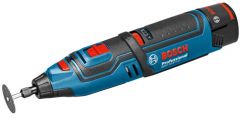
|
variable speed rotary tool: can be used with many tool attachments, including small drill bits. It is used mostly in crafts. |
|
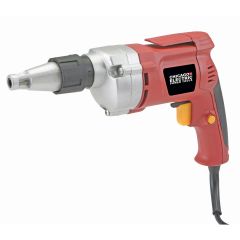
|
drywall driver: used specifically for driving drywall screws into drywall. It is designed so that it will not drive the screw in too far and damage the surface of the drywall. |
|
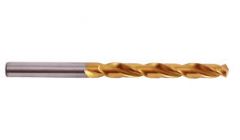
|
Twist bit: designed for wood. If you use it with metal, lubricate it with machine oil. |
|
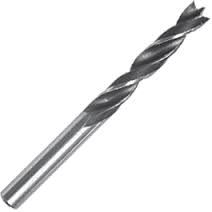
|
Brad-point bit: has a center point to help guide the drill bit to the desired position. It drills a clean hole, like those needed for fine woodworking. |
|
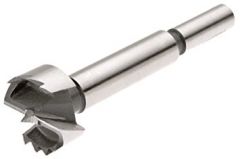
|
Forstner bit: drills a smooth, shallow hole. It has a small center spur, so it can drill a nearly flat-bottomed hole. Forstner bits should be used only in a drill press. |
|
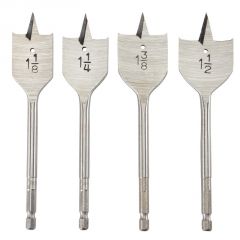
|
Spade bit: the long point makes it easy to locate the hole exactly where you want it. Start the drill at a slow speed as it enters the wood. If you are not careful, it will leave a splintered exit hole. |
|
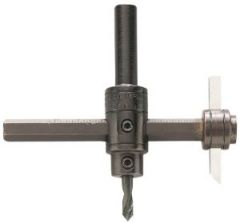
|
Fly cutter: also called a circle cutter. It should be used only in a drill press. |
|
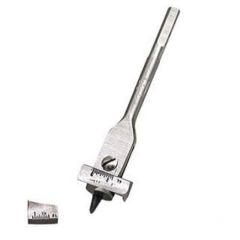
|
Expansion bit: can be adjusted to cut holes up to 3". Should not be used with an electric drill. |
|

|
Glass/tile bit: Drills holes in glass and tile; must be used at a slow speed. |
|

|
Step bit: has up to 13 diameters on it. The hole gets larger as the bit goes deeper into the wood. |
|
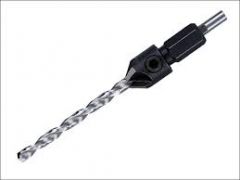
|
Screw pilot bit: drills the shank and pilot hole for wood screws. The size of the bit needed is determined by the screw size. |
|
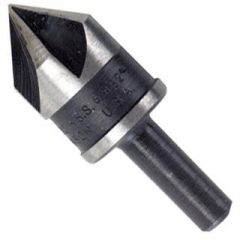
|
Countersink bit: drills a neat taper for the head of a wood screw. |
|
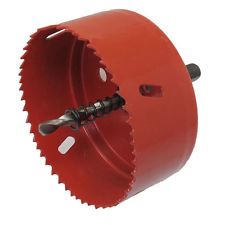
|
Hole saw: cuts large holes in wood, plastic, and thin metal. It is mounted onto a special arbor with a bit in the middle to guide the saw into the wood in the correct location. |
|
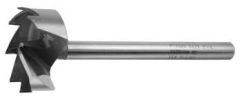
|
Multispur bit: bores very clean holes at any angle it should be used only in a drill press. |
|
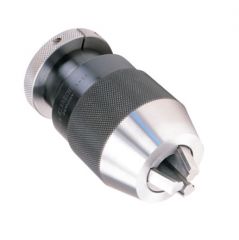
|
Keyless drill chuck: A chuck that does not require a key for tightening. Drill bits can be tightened by hand. |
|
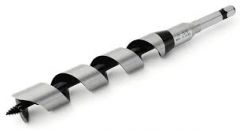
|
Auger bit: for an electric drill |
|
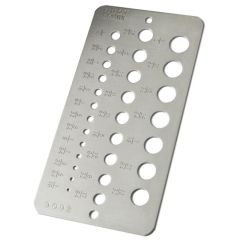
|
Drill gauge: measure the size of a drill bit. Insert the drill into the holes until you find a perfect fit. |
|
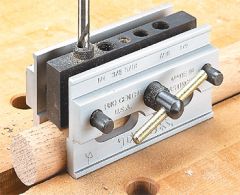
|
Doweling jig: Centers dowel holes in the end or edge of wood. The jig clamps to the wood and centers itself on the edge. |
|
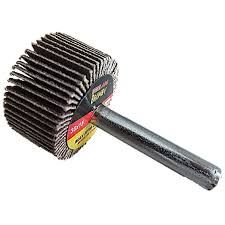
|
Flap wheel sander: converts an electric drill into a flexible sander; as the drill turns, the sandpaper strips conform to the contoured surface of the wood. |
|
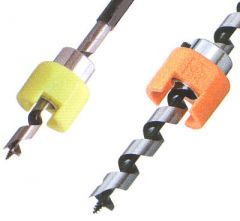
|
Depth stop: slides onto a bit to stop the bit at a certain depth in the wood. |
|
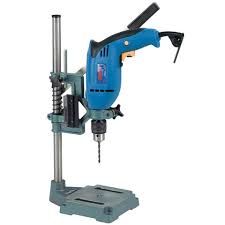
|
Vertical drill stand: converts an electric drill into a small benchtop drill press. |
|
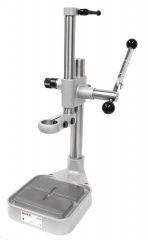
|
Precision drill stand: fits onto the drill in place of the chuck. It can drill perfectly perpendicular holes, or it can be set to drill holes at a specific angle. |

